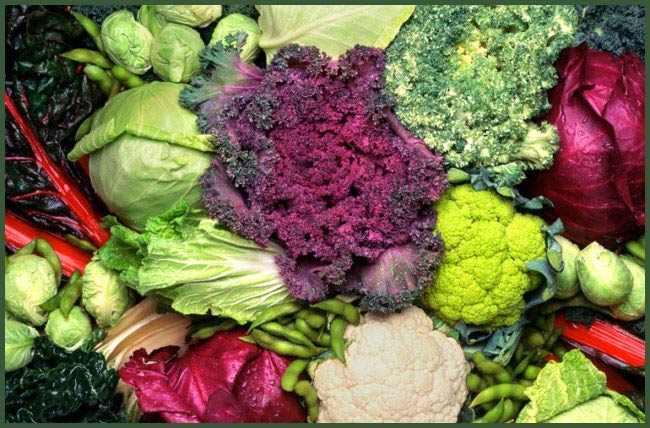What Are Cruciferous Vegetables — and Why Are They So Good for You?
Discover What Cruciferous Vegetables Bring To The Table

Published: December 9, 2020
A few years ago a patient came into my office complaining of migraines. He said, “You might think I am crazy, doc, but I get headaches when I eat certain vegetables.”
Which ones? He couldn’t be sure. Sometimes salads gave him a headache, usually in restaurants. Cole slaw gave him a headache no matter where he ate it. The list seemed completely random and included Brussels sprouts, watercress, broccoli and radishes.
“I grinned like an amateur holding a royal flush,” says internal medicine specialist Roxeanne Sukol, MD, MS. “The patient was naming only cruciferous vegetables.”
Cabbage family cousins
Many common vegetables belong to the cabbage family (genus Brassica). The edible members of this family are called cruciferous vegetables. That’s because their four-petaled flowers look like a crucifer, or cross.
Cruciferous veggies include:
- Arugula (also called rocket).
- Bok choy.
- Broccoli.
- Brussels sprouts.
- Cabbage.
- Cauliflower.
- Chard.
- Collard and mustard greens.
- Daikon radish.
- Horseradish.
- Kale.
- Kohlrabi.
- Radish.
- Rapini (broccoli rabi).
- Rutabaga.
- Turnip.
- Wasabi.
- Watercress.
An ancient family tree
Ever hear about the triangle of U? A botanist named U theorized that all modern-day cruciferous vegetables evolved from three different ancestral plants in various configurations.
Over the ages, gardeners also influenced the great variety of cruciferous veggies we have today. They selectively bred plants for certain appealing characteristics. For example:
- Kale is grown for its leaves.
- Kohlrabi is grown for its (swollen) stems.
- Broccoli and cauliflower are grown for their buds.
Enjoying these veggies
Luckily, except for the patient whose unusual story I’ve shared, most of us get to enjoy cruciferous veggies without suffering any negative consequences whatsoever.
Cruciferous veggies taste great on their own. There’s nothing like fresh arugula from the garden. The sweet, spicy crunch of a pure, translucent slice of radish or kohlrabi is like nothing else.
Cruciferous vegetables are a great addition to stir fries, salads, soups and stews. When you add arugula to mixed salad greens, their spicy, appealing flavor is absolutely unmistakable.
The strong flavors of cruciferous veggies stand up against lots of distinctive spices, herbs and garnishes. For example, try cooking chicken or salmon on a thick bed of bok choy and cabbage with a sauce of balsamic vinegar, olive oil, garlic, ginger, honey, fresh tomato, salt and pepper. Just toss all the sauce ingredients into the blender, and give it a whirl.
Cauliflower can be steamed whole, sliced into thick “steaks” and then coated with any combination of toasted sesame seed oil, lemon juice, soy sauce, cumin, coriander, anise or chili pepper. This dish makes a particularly impressive presentation, and it’s on almost everyone’s diet, whether you eat gluten-free, vegan or paleo.
Many health benefits
The importance of the Brassica family of foods to our diet cannot be overstated. To begin with, cruciferous vegetables contain lots of:
- Soluble and insoluble fiber.
- Vitamin C.
- Vitamin B9 (folate).
- Potassium.
- Selenium.
- Phytochemicals.
They are also rich sources of compounds known as glucosinolates, which may help to fight cancer. (These sulfur-containing compounds were likely the cause of the patient’s headaches.)
A number of research studies suggest that a diet rich in cruciferous vegetables may lower rates of a variety of cancers, including breast, pancreatic, bladder, lung, prostate and colon cancer.
Certain enzymes in cruciferous veggies may help protect cell DNA from damage, and others may have antioxidant properties. Crucifers may also help to counteract cancer-causing nitrosamines and polycyclic aromatic hydrocarbons that are found in charred, cured or barbecued fish or meats.
Some researchers have suggested that sulforaphane may play a major role in preventing prostate and colon cancer. Sulforaphane are found in high levels in:
- Broccoli.
- Broccoli sprouts (sold next to the alfalfa sprouts).
- Bok choy.
- Brussels sprouts.
So increase your dietary intake of broccoli and other cruciferous vegetables. They can’t hurt, and they might help. And their strong, distinctive flavors will spice up any meal.


